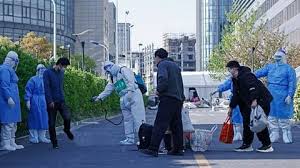Shanghai records covid infection-free day

The Chinese city of Shanghai did not register any new covid-19 infections on Saturday for the first time since March, when a strong outbreak linked to the omicron variant broke out that led to a long and severe confinement of its population.
“There were no new confirmed domestic cases of Covid-19 and no new asymptomatic infections in Shanghai on June 24, 2022,” the government of the city of 25 million people said in a statement.
In March, infections began to multiply in the economic capital of the country, which ended up decreeing a severe confinement for two months.
The lockdown, criticized by the population struggling to get food and medical care, was lifted virtually in early June, although the return to normality was hampered by the reinstatement of restrictions in some districts.
Two weeks ago, millions of people were once again temporarily confined as the municipal government launched a mass testing campaign in some areas.
Beijing contained
Meanwhile, the capital Beijing closed schools and offices for weeks over another outbreak that authorities say was contained last week.
The municipal education office indicated on Saturday that all elementary and middle school students could return to class starting Monday, although teachers, students, and parents must first undergo a PCR test.
The capital reported just two new infections on Saturday.
For its part, Shenzhen, a large industrial city in the south of the country, announced this Saturday that it will close for three days the wholesale markets, cinemas, and gyms of a downtown district bordering Hong Kong, after in that town detect cases of covid-19.
China is one of the world’s largest economies that continues to apply the so-called “zero covid” strategy to eradicate the virus based on restrictions on international travel, quarantines, massive tests and severe confinements.
authorities insist that the policy is necessary to avoid a collapse of the health care system due to the unequal distribution of medical resources and the low vaccination rates of the elderly.





